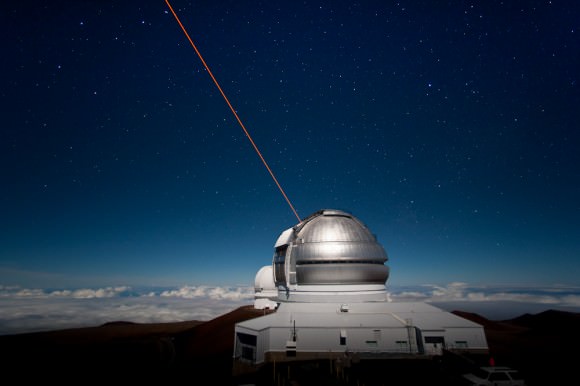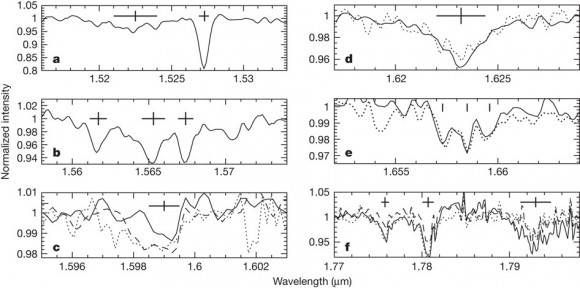
Gemini North Observatory, Maunakea Hawaii. Image Credit: Gemini Observatory/AURA
Using the Gemini North Telescope, astronomers studying the central region of the Milky Way have discovered 13 diffuse interstellar bands with the longest wavelengths to date. The team’s discovery could someday solve a 90-year-old mystery about the existence of these bands.
“These diffuse interstellar bands—or DIBs—have never been seen before,” says Donald Figer, director of the Center for Detectors at Rochester Institute of Technology and one of the authors of a study appearing in the journal Nature.
What phenomenon are responsible for these absorption lines, and what impact do they have on our studies of our galaxy?
Figer offers his explanation of absorption lines, stating, “Spectra of stars have absorption lines because gas and dust along the line of sight to the stars absorb some of the light.”
Figer adds, “The most recent ideas are that diffuse interstellar bands are relatively simple carbon bearing molecules, similar to amino acids. Maybe these are amino acid chains in space, which supports the theory that the seeds of life originated in space and rained down on planets.”
“Observations in different Galactic sight lines indicate that the material responsible for these DIBs ‘survives’ under different physical conditions of temperature and density,” adds team member Paco Najarro (Center of Astrobiology, Madrid).
The discovery of low energy absorption lines by Figer and his team helps to determine the nature of diffuse interstellar bands. Figer believes that any future models that predict which wavelengths the particles absorb will have to include the newly discovered lower energies, stating, “We saw the same absorption lines in the spectra of every star. If we look at the exact wavelength of the features, we can figure out the kind of gas and dust between us and the stars that is absorbing the light.”

Spectra of the newly discovered Diffuse Interstellar Bands (DIB's).
Image Credit: Geballe, Najarro, Figer, Schlegelmilch, and de la Fuente.
Image Credit: Geballe, Najarro, Figer, Schlegelmilch, and de la Fuente.
Since their discovery 90 years ago, diffuse interstellar bands have been a mystery. To date, the known bands that have been identified before the team’s study occur mostly in visible wavelengths. Part of the puzzle is that the observed lines don’t match the predicted lines of simple molecules and can’t be traced to a single source.
“None of the diffuse interstellar bands has been convincingly identified with a specific element or molecule, and indeed their identification, individually and collectively, is one of the greatest challenges in astronomical spectroscopy, recent studies have suggested that DIB carriers are large carbon-containing molecules.” states lead author Thomas Geballe (Gemini Observatory).
One other benefit the newly discovered infrared bands offer is that they can be used to better understand the diffuse interstellar medium, where thick dust and gas normally block observations in visible light. By studying the stronger emissions, scientists may gain a better understanding of their molecular origin. So far, no research teams have been able to re-create the interstellar bands in a laboratory setting, mostly due to the difficulty of reproducing temperatures and pressure conditions the gas would experience in space.
If you’d like to learn more about the Gemini Observatory, visit: http://www.gemini.edu/
Read more about RIT’s Center for Detectors at: http://ridl.cis.rit.edu/
Read more about RIT’s Center for Detectors at: http://ridl.cis.rit.edu/
Source: Universe Today
No hay comentarios:
Publicar un comentario